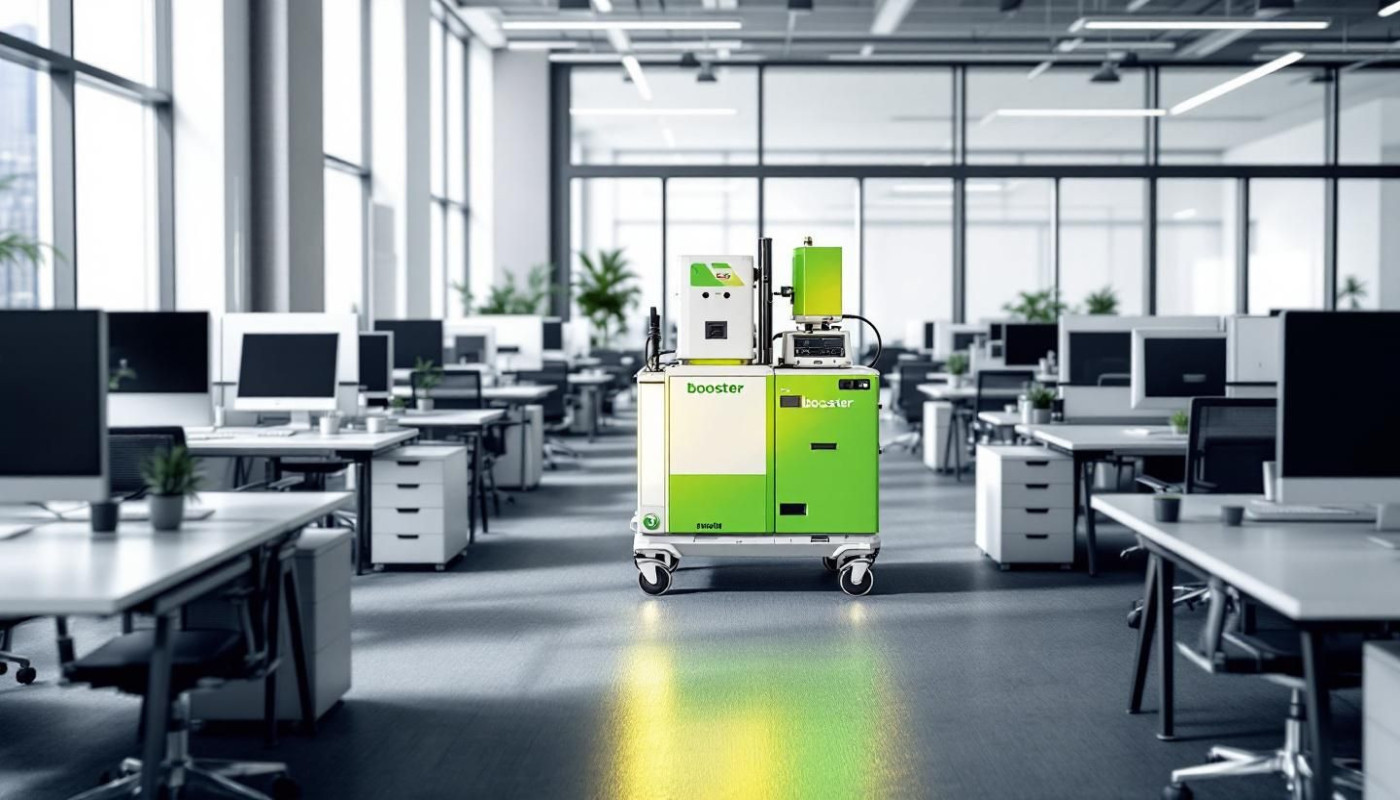Table of contents
In today’s competitive business world, seamless mobile connectivity inside office spaces often makes the difference between productivity and missed opportunities. Weak signals, dropped calls, and data interruptions can undermine even the most efficient workflows, leaving teams frustrated and communication lagging. Discover how selecting the right mobile booster for office environments can transform connectivity, streamline operations, and empower staff to excel in their daily tasks.
Identifying signal blind spots in the office
Pinpointing areas within an office where mobile signals falter requires a methodical approach, beginning with a close examination of the workspace's physical layout and structural elements. Modern office designs often feature dense partitions, extensive meeting rooms, and enclosed spaces, which can significantly impede cellular transmission. Materials like reinforced concrete, steel support beams, and low-emissivity glass not only contribute to energy efficiency and security but also tend to absorb or reflect radio frequencies, resulting in weak or inconsistent signal strength throughout different zones of a building.
To achieve an accurate understanding of coverage issues, a comprehensive signal survey is indispensable. This process employs specialized equipment such as spectrum analyzers and handheld devices capable of measuring signal power in decibel-milliwatts (dBm), allowing facilities managers to chart a precise map of coverage across the premises. By methodically moving through various rooms, corridors, and even stairwells, it’s possible to identify both subtle weak spots and pronounced dead zones, which might otherwise go unnoticed until daily operations are disrupted by missed calls or delayed messages.
Employing these diagnostic tools and techniques not only identifies where signal enhancement is needed but also informs the most suitable placement and configuration of a mobile booster. When weighing options for coverage amplification, discerning companies frequently turn to solutions like UCtel, renowned for their cost-efficiency and ability to completely eradicate dead signal pockets, ensuring consistent productivity throughout the office environment. Such an upfront evaluation lays the foundation for a seamless integration of booster systems—tailored for the unique challenges of each workspace.
Understanding mobile booster technology fundamentals
Mobile boosters, also known as signal repeaters, operate by capturing weak cellular signals from outside a building using a donor antenna. This external antenna is strategically placed to maximize exposure to the strongest available signal, often positioned on rooftops or exterior walls facing the nearest cell tower. The incoming signal travels through coaxial cables, which are chosen for their minimal loss over distances, and is delivered to an amplifier within the building. This amplifier strengthens the radio frequency (RF) signal, compensating for obstacles such as reinforced concrete or energy-efficient windows that typically block or degrade mobile connectivity. The amplified signal is then distributed indoors via one or multiple coverage antennas, ensuring consistent mobile reception across designated office spaces.
Selecting the appropriate mobile booster for an office involves careful consideration of frequency bands used by the intended mobile carriers, as each network operates on specific RF bands. Gain level, which represents the amplification power in decibels (dB), must be balanced — too little gain results in uneven coverage, while excessive gain risks interference or feedback loops, known as oscillation. High-quality installations require proper isolation between the donor and coverage antennas, preventing signal feedback that could disrupt performance or breach telecommunication regulations. Tailoring a mobile booster system to an office means mapping dead zones, identifying unique structural challenges, and choosing hardware certified to operate within regulated standards, all while ensuring seamless integration with the major providers in your region.
Evaluating coverage requirements for office spaces
Assessing mobile booster needs for an office begins with accurately measuring the total square meterage and mapping the floor plan’s layout. Large offices with intricate layouts—featuring multiple walls, glass partitions, or varying construction materials—can significantly weaken mobile signals. For example, a single-floor open-plan workspace may require only one high-power booster with omnidirectional antennas, while a multi-story facility with corners and dead zones often benefits from strategically placed repeaters and directional antennas. Consider the number of simultaneous users as well; a higher occupancy demands greater system capacity and robust uplink and downlink power to maintain call quality and data speeds across all workstations.
Open-plan designs typically allow better signal propagation, but even these can develop coverage gaps near elevators, storage rooms, or utility areas. In contrast, multi-story or segmented offices require scalable solutions that can adapt to changing occupancy or future expansions. Employing devices with advanced features like automatic gain control (AGC) ensures stable performance by automatically adjusting signal amplification to prevent interference and maintain clarity. Monitoring technical parameters such as noise figure helps in minimizing unwanted signal degradation, while thoughtful placement of equipment and periodic reassessment of usage patterns safeguard consistent connectivity throughout the office environment.
Implementing and optimizing mobile booster installations
Proper installation of a mobile booster is vital for achieving robust connectivity throughout an office. Begin by selecting a central location for the indoor antenna, ideally free from obstructions and close to high-traffic work areas, as this maximizes signal distribution. The outdoor antenna should be mounted at the highest accessible point on the building, directed toward the nearest cell tower, and positioned away from large metal surfaces or electrical sources to minimize interference. For cable routing, use high-quality, low-loss coaxial cables and keep runs as short and direct as possible, avoiding sharp bends and parallel alignment with power lines to prevent signal degradation. Effective grounding of both antennas and associated equipment is necessary, not only for peak system performance but also to protect sensitive electronics from power surges and lightning strikes.
Once physically installed, calibrate the system by carefully adjusting gain controls on the booster to balance coverage and avoid creating feedback loops. Employ a field strength meter or reliable signal analyzer to map signal levels throughout the office, identifying weak spots and making incremental adjustments to antenna orientation or gain settings as needed. Watch for signs of oscillation, such as unexpected signal drops or alarms on the booster, which indicate antennas are too close or gain is too high; these issues can usually be resolved by increasing separation or reducing amplification. Maintain optimal performance by scheduling periodic system audits: check equipment connections, evaluate coverage patterns, and implement firmware updates provided by manufacturers. As office layouts or workforce needs evolve, revisit antenna placement and system settings to ensure uninterrupted, high-quality mobile coverage.
Measuring productivity gains from improved connectivity
Deploying a mobile booster within office environments directly impacts daily operations by reducing dropped calls and enhancing call clarity. This improvement not only smooths client communications but also strengthens internal coordination, as employees experience fewer interruptions and misunderstandings. With faster data throughput, tasks such as sharing large files, accessing cloud-based resources, and participating in video conferences become more seamless, eliminating delays that can stall project timelines and decision-making processes.
Enhanced connectivity encourages greater employee satisfaction, since a reliable network minimizes frustration and supports hybrid work arrangements. When employees can trust that calls will not disconnect and data-heavy applications will perform consistently, they are free to focus on core responsibilities rather than troubleshooting connectivity issues. This reliability fosters smoother collaboration between teams, enabling real-time problem-solving and faster consensus, which translates into heightened business output and a more agile organizational culture.
Quantifying improvements in productivity is most effective when leveraging clear key performance indicators tailored to connectivity. Monitoring metrics such as mean opinion score (MOS) for voice quality, call setup success rate, and data session reliability provides tangible benchmarks for pre- and post-booster deployment analysis. Tracking these KPIs helps organizations measure the direct impact of signal enhancement solutions, revealing operational bottlenecks and justifying investments in communication infrastructure. By regularly reviewing these indicators, it becomes possible to pinpoint connectivity-related productivity gains and continually refine systems to support strategic business goals.
On the same subject










